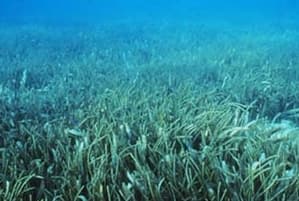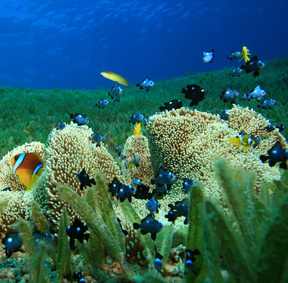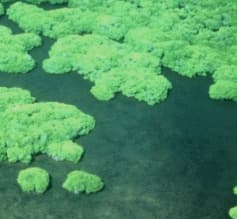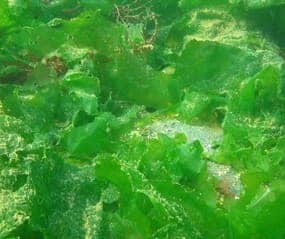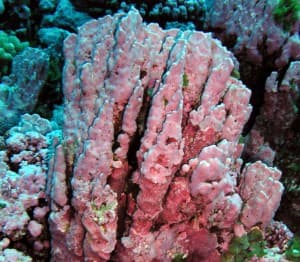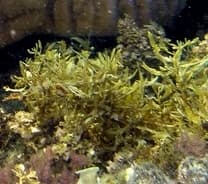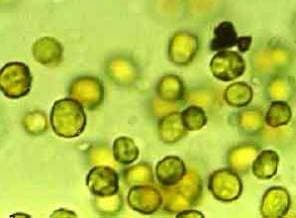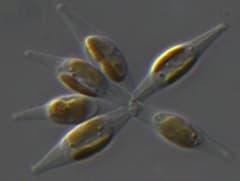Coral Reef Plants
The term “coral reef plants” has been traditionally used to refer to all photosynthetic life forms (other than bacteria) commonly found within coral reef ecosystems.
Such organisms have been also been traditionally divided into two major “plant” sub-divisions: “flowering plants” (angiosperms) and “algae“.
However, as today’s high school and college students are well aware, the diverse array of life forms that represent the “algae” are no longer considered “plants” (part of the Kingdom Plantae) by modern biologists (more on that later).
To keep with the long-established tradition of discussing these two divergent groups of autotrophs together while still recognizing their profoundly distinct differences, these two groups are both included in our page on “coral reef plants” but assigned to separate sections below.

